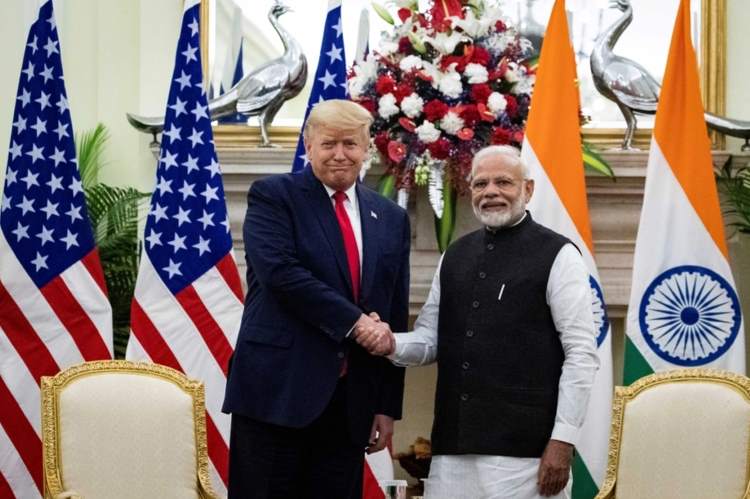
US-India ties under Trump 2.0: A new Trump Administration will take office in January. While the past is not necessarily a precedent, we can make some reasonable assumptions about how the bilateral relationship will evolve. Job creation and balancing trade will be strongly prioritised and may cause renewed tensions with India. The Trump Administration will likely want to see more direct reciprocity in exchange for assistance such as technology transfers. But we should expect continued focus on Indo-Pacific security and in attracting new investments into the United States. India can be an important partner on both fronts, which will provide ballast to the relationship.
READ I COP29 debates China’s status – developing country or a developed giant
Looking Back at Trump 1.0
During the last Trump Administration, US-India ties fared well despite some real areas of tension. In particular, the defence relationship saw a number of concrete steps forward such as the creation of the tri-service exercise TIGER TRIUMPH, concluding negotiations on defence interoperability agreements, and relaxing defence export controls though steps like moving India to Tier-1 of the US Department of Commerce’s Strategic Trade Authorisation licensing list.
Apart from these operational steps, the fact that the United States was more aggressively confronting China gave comfort to the Indian government that America’s commitment to Indo-Pacific security was not wavering, despite the political transition in Washington, DC. The nascent subject of a US-China G2 condominium was largely put to rest. Strategic cooperation with India went beyond bilateral ties. Notably, the Trump Administration championed an elevation of the Quad (US, India, Japan, and Australia) to become a recurring cabinet-level meeting.
Most of the tensions with India during the Trump administration came from the two countries’ similar approaches on trade. Both the United States and India continue to have large trade deficits with the world. The Modi government’s initial protectionist policy steps to support “Make in India” conflicted with the Trump administration’s manufacturing and export plans.
The two nations entered an intense trade war which saw the United States revoke India’s trade privileges under the Generalised System of Preferences program. India put retaliatory duties against a range of American products due to the Trump administration’s tariff increases on steel and aluminium. The efforts to negotiate a modest package of reforms to address some of these pain points on trade fell apart late in the Trump administration’s first term.
The Trump administration also pressured India to reduce its hydrocarbon linkages to Iran and Venezuela to which India complied. However, such linkages play into the fear of a deeper relationship with the United States as we may expect allies and partners to share our perspective on global threats and opportunities.

Looking ahead
With a second Trump administration, we can expect strong leader-level engagement to help maintain momentum. Prime Minister Modi was among the first global leaders to congratulate President Trump on his victory, and India is expected to host President Trump and the other Quad leaders for the Quad Leaders’ Summit in 2025. President Trump may occasionally criticise Prime Minister Modi on some issues—like India’s Harley Davidson tariffs during the first Trump administration— but there is enough substance on the table to forgive small slights.
American support for Make in India, signified by the numerous outbound investment announcements during last summer’s Joint Statement from Prime Minister Modi’s State Visit to Washington, DC, will likely be the first casualty. The initiative on Critical and Emerging Technologies (iCET) may be too high-profile to cancel, though India’s aspirations for iCET as a vehicle to expand technology transfers and enhance high-end manufacturing may be harder to fulfil.
Bilateral energy cooperation will tilt away from combatting climate change and back to expanding hydrocarbon trade. Though, in truth, India’s climate progress has been entirely driven by domestic imperatives as opposed to bilateral support or multilateral engagements. As we saw in 2017-2021, US climate cooperation with India will once again be led by philanthropies, city & state governments, and other institutions.
Defence cooperation should continue to expand. Both of America’s political parties agree that China plays a destabilising role in the Indo-Pacific and that America has a strong interest in building partnerships that can improve stability.
We may also see reduced pressure on India over its own domestic and foreign policy choices. A less aggressive American posture on Russia will further imperil Ukraine, but would benefit India, which has dramatically increased trade linkages with Russia since the invasion of Ukraine. India’s domestic social issues like human rights, religious tolerance, and concerns about fairness of elections will likely be de-emphasised.
The American approach to relations with India may again shift to become more transactional. But the significance of the partnership was well-understood by officials in the first Trump administration and supported by President Trump himself, allowing both sides to manage areas of friction while seizing opportunities to deepen cooperation.
This article was first published in CSIS website.
Richard Rossow is a leading expert in US-India commercial ties. He leads the India program at the Center for Strategic & International Studies, and the India advisory team at McLarty Associates.

